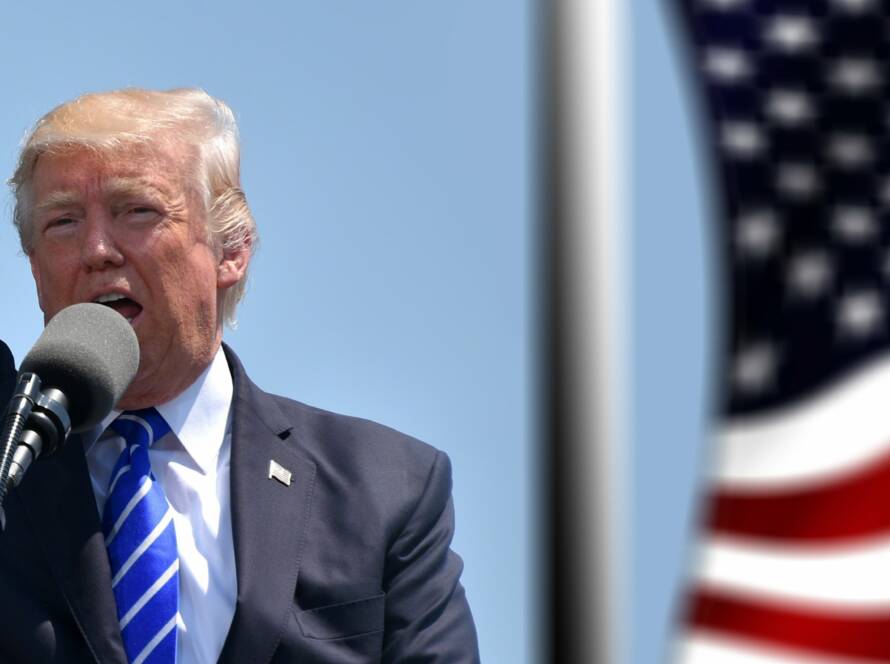The world economy has experienced trade wars before, but the recent resurgence of tensions between top economies like the U.S., China, and the EU brought shockwaves across global logistics. From burst tariffs to shattered supply chains, the impact is spreading through industries and global borders. For companies that rely on global commerce, understanding what this trade war implies is no longer a desire—it’s a necessity.
This blog by Sharp Blue discusses the increasing trade war, how it is impacting global logistics, and how companies can adapt and thrive in such a volatile climate.
Why Are Trade Wars Escalating?
- Geopolitical tensions: States are increasingly turning to trade policies as instruments of political competition. Trade is more and more being utilized to extend influence, retaliate against rivals, or secure bargaining leverage on issues like security, technology, and global power. The tensions in U.S.-China trade, for instance, are as much about matters of global power as they are about economics.
- Economic Nationalism: Governments are becoming more and more inclined towards using protectionist tactics in order to shield local industries. This is driven by the urge to reduce foreign competition, generate employment opportunities, and gain economic security. For example, tariffs are utilized in order to safeguard local manufacturers and protect key industries from foreign control of the market.
- Supply Chain Vulnerabilities: The pandemic revealed the weakness of reliance on global supply chains. Countries are realizing that their dependence on foreign suppliers for critical goods is a vulnerability and therefore are looking to restore or diversify manufacturing. This is leading to trade tensions as countries desire control over integrated global markets.
Major Trade Wars in Recent History
-
U.S.-China Trade War (2018–Present)
The U.S.-China trade war, which began in 2018, has turned into a long-lasting economic conflict with major effects around the world. The United States government, under the leadership of President Donald Trump, escalated the stakes early in 2025 by imposing a 10% tariff on all Chinese imports, effective February 4, 2025. The move was in response to Chinese trade practices, including intellectual property and market access concerns.
China retaliated, imposing a 15% tariff on U.S. coal and liquefied natural gas and a 10% tariff on U.S. crude oil, agricultural machinery, and large-engine vehicles, effective from February 10, 2025. China added U.S.-based companies PVH Group (the parent company of the two American clothing brands: Calvin Klein and Tommy Hilfiger) and Illumina Inc. a biotechnology company to its unreliable entities list and launched an antitrust investigation into Google.
-
Russia-Ukraine Conflict & Western Sanctions (2022–Present)
The Ukraine war, which began as a low-grade conflict and flared into a full-blown invasion early in 2022, has had a tremendous influence on global trade flows. The Western powers, spearheaded by the United States and the European Union, have slapped broad sanctions on Russian exports and imports in response to Russian aggression. These sanctions have wrought havoc on the market dislocations in the energy markets, particularly in Europe, where the reliance on Russian natural gas has been a historical source of anxiety.
-
Brexit and EU Trade Adjustments
The United Kingdom’s exit from the European Union, Brexit, has ushered in new customs procedures, trade barriers, and increased documentation requirements. These have slowed shipments between the UK and the EU and vice versa, affecting companies that relied on seamless cross-border trade. Companies have had to adapt to new regulatory environments, which have led to increased operational costs and supply chain delays. In response, the EU has been working to streamline customs procedures and reduce trade frictions. But the full impact of the changes is still working its way through, with policymakers and business leaders closely monitoring to avoid adverse impacts on trade and economic stability.
-
U.S.-Canada and U.S.-Mexico Trade Disputes
In a historic policy shift, President Trump signed executive orders on February 1, 2025, imposing a 25% tariff on all Mexican and Canadian goods, with Canadian energy exports being hit with a lower 10% tariff. Canadian Prime Minister Justin Trudeau and Mexican President Claudia Sheinbaum reacted by securing a one-month postponement of the tariffs in return for consenting to heighten border security efforts to dispel U.S. concerns about unlawful immigration and contraband.
Impact on Global Logistics
-
Disruption of the Global Supply Chain
Trade wars have a tendency to cause the rearrangement of supply chains as companies attempt to avoid tariffs and restrict costs. The recent shift of production has seen countries like Vietnam, Mexico, and India become new manufacturing hubs. For instance, during the time of the U.S.-China trade war, U.S. companies shifted their production bases to Vietnam and Mexico to evade Chinese tariffs. Consequently, U.S. imports from Vietnam increased 35% in 2019, worth $17.5 billion. Also, in 2024, several hi-tech companies, such as Apple and Samsung, announced plans to diversify their production sites, moving segments of their assembly lines to India, Thailand, and Mexico, which were seen as safe harbors in the midst of rising protectionist policies by major economies.
-
Increased Freight Costs and Market Volatility
Since tariffs have made it more expensive to import goods, freight companies have had to deal with market unpredictability, especially for ocean freight. Prices for U.S.-Asia freight saw a spectacular spike in 2024, with rates more than doubling from the year before. This increase in freight rates has caused a major shift in the pricing structures of manufacturers and retailers who now have to contend with higher supply chain costs. Freight rates along key transpacific routes saw a record 48% increase over the last 12 months , as of 2025 a clear indication of how trade wars continue to impact the logistics sector.
-
Shifting Freight Routes and Cost Alignment
As businesses scramble to avoid tariffs and lower transport costs, the freight world is being remapped. Shippers are now actively seeking alternative routes to avoid congested ports or countries with high tariffs. In 2025, for example, we saw a significant increase in the use of East African ports, like Kenya and Tanzania, as businesses rerouted shipments to circumvent delays resulting from the U.S.-China tariff war. Similarly, Panama Canal traffic jumped by 15% in 2024 as it became a main conduit for U.S. imports from Asia, especially those imports from Non-Chinese manufacturers.
-
Regulatory Uncertainty and Compliance Challenges
Trade wars typically trigger an explosion of regulatory change that companies must quickly adapt to, especially in the logistics sector. The ongoing strife between China and the U.S. has caused numerous changes in trade agreements, customs procedures, and tariffs, which have placed compliance burdens on businesses. The most noteworthy recent change was the U.S.’s suspension of its de minimis rule for Chinese packages early in 2025, which had allowed low-value items to enter the U.S. duty-free.
This decision significantly encroached on e-commerce companies like fashion e-commerce, especially sites like Shein and Temu, which depend on shipping inexpensive, fast-moving consumer goods from China.
Similarly, in Europe, additional tariffs on consumer goods and electronics imported from China later in 2024 prompted the EU to introduce tighter customs checks, resulting in delays for many electronics exporters and importers. As a result, companies have had to invest in new systems to ensure compliance and work with customs brokers to keep up with rapidly evolving regulations.
-
Currency Fluctuations and Trade Finance Risks
Trade wars lead to volatility in global markets, resulting in unpredictable currency fluctuations. Countries that face high tariffs may devalue their currencies intentionally to help maintain competitiveness in their exports, impacting global trade pricing and international logistics expenses. When big economies resort to tariffs, target nations have a tendency to respond by adjusting monetary policy. For example, China allowed the yuan to depreciate during the U.S.-China trade war, making its exports cheaper even with tariffs. More recently, uncertainty about U.S. trade policy under the Trump administration has caused volatility among emerging market currencies like the Mexican peso and Chinese yuan.
Strategic Responses: How Businesses Can Adapt
Although the effects of trade wars on logistics can be immense, firms can take several measures to protect themselves and stay competitive:
- Supplier and Market Diversification: Businesses should not limit too much of their business with any single nation or region for their supply chains. When they draw from many nations, businesses can dodge risks if one area gets subjected to tariffs or other trade restrictions.
- Invest in Technology: Technology like supply chain visibility software, digital customs clearance software, and artificial intelligence (AI) can help businesses make logistics more efficient and reduce the impact of customs delays.
- Plan for Contingencies: Having contingency plans is key to managing disruptions. Businesses must prepare themselves for possible tariff fluctuations, shipping fees, and supply chain delays by having alternative suppliers, inventory alternatives, and transport networks in place.
- Coordinate with Logistics Experts: Close coordination with freight forwarders, customs brokers, and supply chain experts will help the company maneuver through complex regulations and avoid costly delays.
- Stay Alerted: Finally, staying alert with regard to the prevailing trade policies, tariffs, and geopolitics is critical. Monitoring the trade agreements, compliance strategies, and geopolitical tensions will help the company anticipate the changes and accordingly adapt.
The Future Prospects
Lastly, trade wars have initiated a dynamic shift in global logistics, forcing companies to rethink their strategy and adapt to new realities. As the world economy remains splintered due to ongoing trade tensions, logistics firms will be forced to act quickly. Increased flexible, diversified, and resilient supply chains are seen, and technology will play an important part in riding out future disruptions. Logistics providers also must be agile, ready to adapt to shifting trade policies, tariffs, and market conditions.



